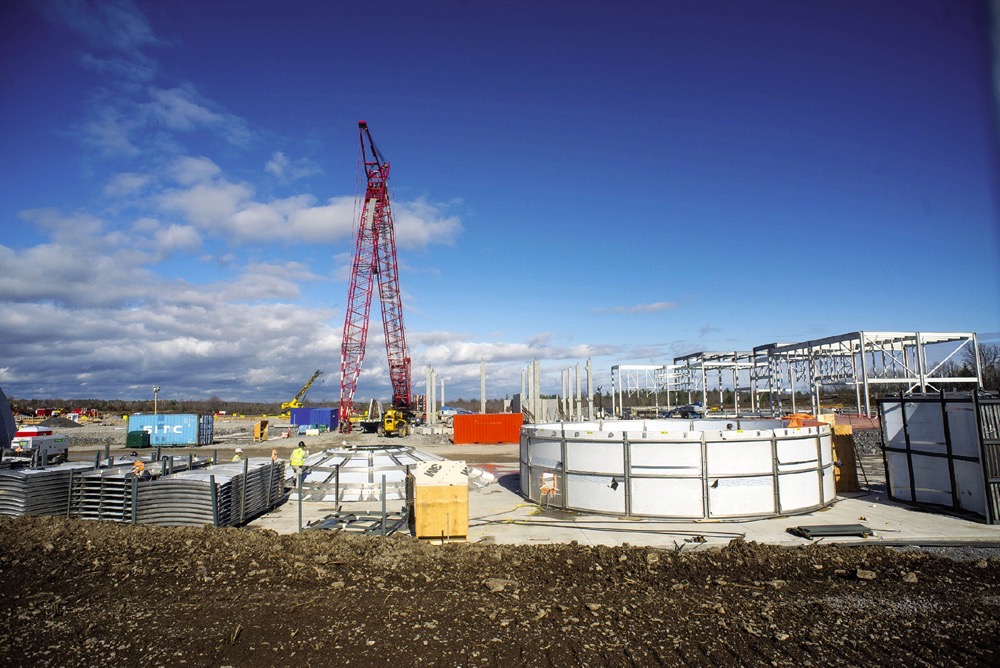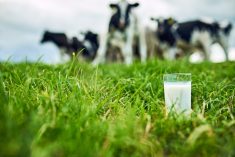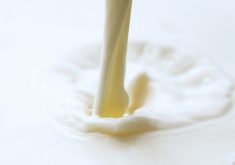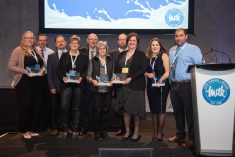The Chinese company building a $225-million infant formula factory in Kingston has yet to secure a source for goat’s milk — needed for the facility’s planned second phase — but remains confident production will begin “around the middle of 2019.”
“It will take three to five years to reach full capacity,” said Justin Zhou, a director of business development with Feihe Dairy Company.
Why it matters: New plant capacity like that planned by Feihe is part of an expanding cow milk sector in Ontario. Dairy goat prices crashed last summer so increased demand could help grow the industry.
Read Also
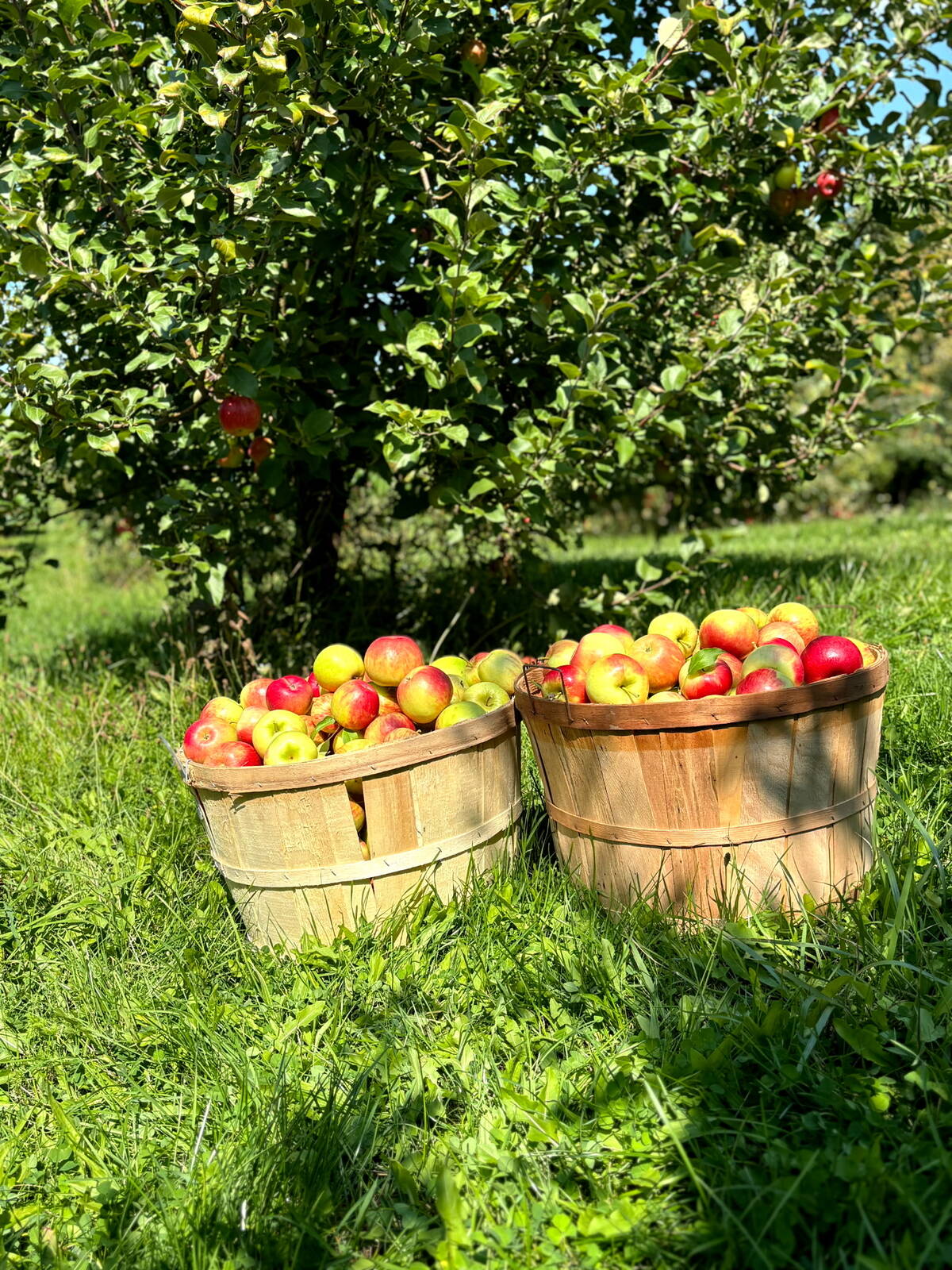
Farmers taking to social media to spread the word about the cost of farm thefts
A rash of farm thefts in Ontario have left farmers looking for new ways to help customers understand the cost of stealing goods.
Canada Royal Milk, a subsidiary of Feihe China Limited is the owner of the under-construction, 320,000-square-foot facility. It received a $24-million grant from Ontario’s Ministry of Economic Development and Growth in November, 2017, and plans to employ more than 200 people in production and research once at full capacity. Both cow’s and goat’s milk are expected to be processed, with a 500-tonne receiving capacity.
“The plant will start with cow’s milk (as well as) potentially with a certain volume of goat’s milk,” Zhou said. More goat’s milk production lines will be introduced in subsequent start-up phases.
Publicly released estimates of the plant’s future needs by the cow dairy sector point to an increased demand of almost one per cent for Eastern Canadian producers.
The company has applied to the Dairy Farmers of Ontario to secure the needed supply, Zhou said.
Securing the necessary volume of goat’s milk, by contrast, will be far less straightforward. Indeed, early estimates of $75 million litres annually are greater than the entire country’s goat’s milk production. Feihe subsequently made it known it would seek a volume less than the current annual national supply, but it will nonetheless represent a huge proportion of the goat’s milk produced in Canada. And this must be secured from a sector in which production levels typically fluctuate because goat milk production is not part of the supply management system.
Feihe, will “potentially sign a long-term contract with (a goat’s milk) broker or (with an) individual goat farmer,” Zhou said. But he said the exact supply plan is still under discussion.
He also refuted other recent media reports that the company will build goat farms in Canada to supply the milk it needs from that sector.
“I need to clarify that our company does not have any plan to build our own goat farm in Canada and we never said anything about it. Feihe has her own farms in China but only in China,” he said.
Carey Bidtnes, business development officer for the Kingston Economic Development Corporation (EDC), says her ongoing efforts to serve as a go-between for Feihe and potential suppliers of goat’s milk have given her a “surprising” knowledge about goat dairy farming. But she can only do so much.
“There’s a group of very knowledgeable farmers who have been trying to keep up to speed on the plant’s future needs,” Bidtnes told Farmtario, adding she speaks with several Eastern Ontario producers on a regular basis. “We touch base.”
Kingston’s EDC even hosted two goat farming information sessions in March, 2017, at which three specialists from the Ontario Ministry of Agriculture, Food and Rural Affairs (OMAFRA) provided insight. Both were filled to capacity.
“At that time, both my office and Frontenac County’s manager of economic development were fielding a lot of calls about goat farming,” Bidtnes said of the reason for putting together the sessions.
When asked if Feihe faced other challenges after deciding to build a factory in Ontario, Zhou agreed “the regulation and law differences were a challenge to us, especially the (health and safety) standards for equipment.” Adapting the plan to comply with those standards “took us a long and hard time.”
Bidtnes credited OMAFRA, the Canadian Dairy Commission, and various departments of the City of Kingston for helping Feihe overcome some of the regulatory hurdles present in Ontario.
“I visited China twice over the past couple of years, and I was really struck by how different the process (of securing regulatory approvals) must be for (the Chinese company),” she commented. “Even just the pace at which projects can proceed, it’s so different.
“So I do have sympathy for them coming to Canada for the first time.”
Zhou stressed, though, that the benefits of coming to Ontario more than outweighed those drawbacks. He provided a list of such benefits — beginning with “milk quality” and ranging through “food safety and standards” and “friendly business environment” — before noting the list is too long to include everything.
Bitdnes says the uncertainty about where the company will purchase its goat’s milk is frustrating. She would prefer that Feihe make a deal with a broker. Bidtnes says there are two brokers currently working in Ontario, with a third potentially becoming active soon — so farmers can get a clear signal of when and how much milk will be needed. The two brokers are Gay Lea and the Ontario Dairy Goat Co-operative.
“A lot of these producers run very efficient operations,” she said. “They can make changes in their feeding programs and breeding programs to meet future needs. But they need that contract to ramp up production.”
According to Zhou, the Canada Royal Milk plant will produce “infant formula and adult care formula. Roughly 85 per cent of the finished product will be exported to China and the remaining product will be sold in Canada, USA and southeast Asia.”


